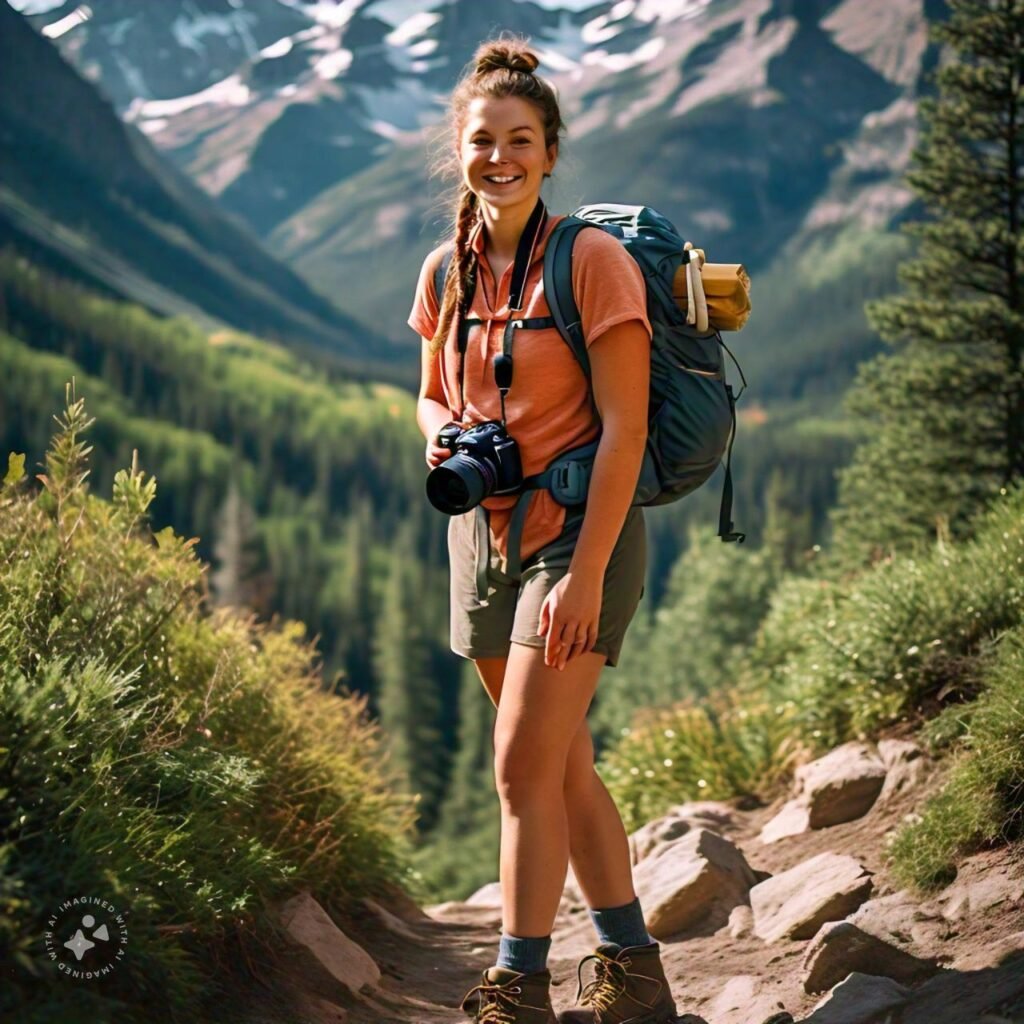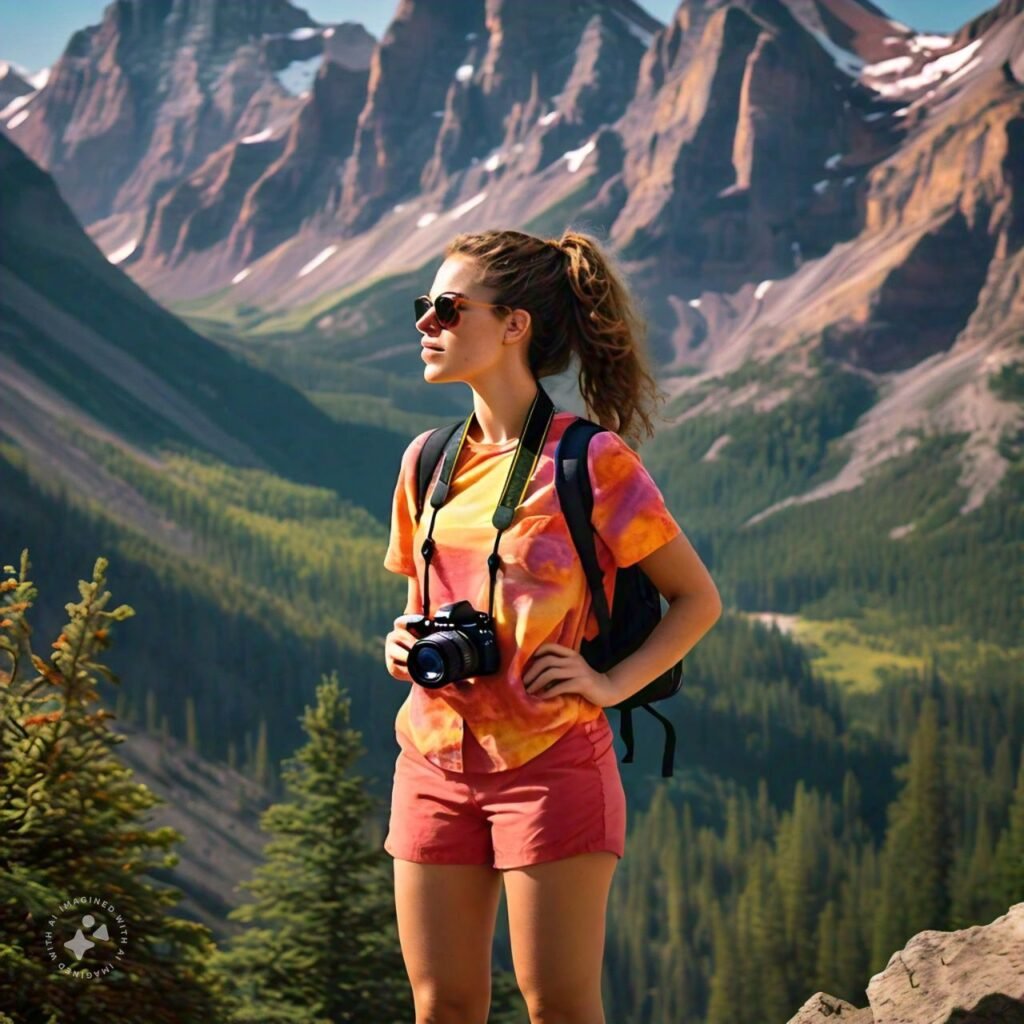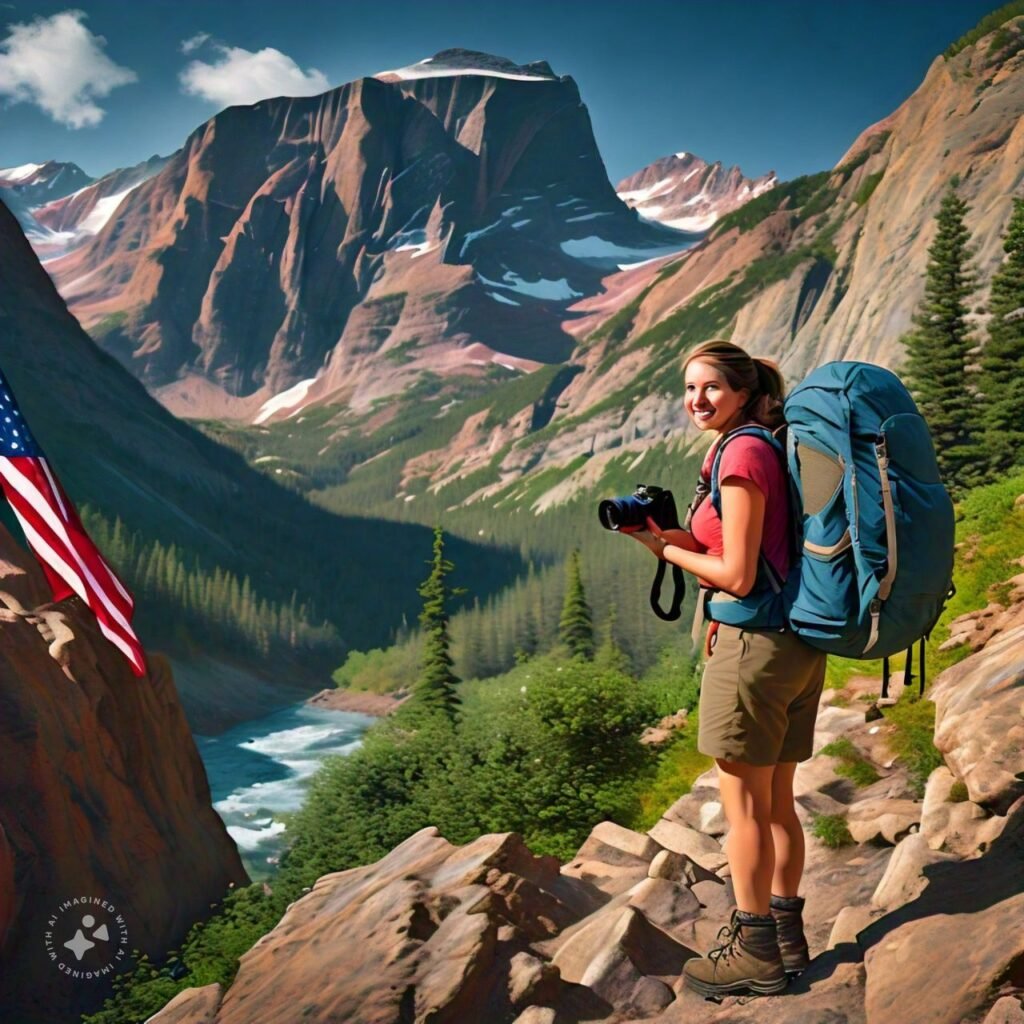
The Flatirons are Boulder’s most iconic natural landmark, drawing outdoor nature lovers from around the world. These dramatic, slanted rock formations rise majestically above the city, offering a striking visual representation of Boulder’s rugged beauty. For locals and visitors alike, the Flatirons are more than just a geological wonder—they are a symbol of the city’s deep connection to the outdoors and a gateway to adventure.
symbolic image
The Geology and Formation of the Flatirons
The Flatirons’ distinctive slanted slabs of sandstone tell a geological story that dates back over 300 million years, showcasing the powerful forces of nature that shaped them. Formed during the Pennsylvanian period, the rocks that make up the Flatirons were once part of ancient sea beds. Over time, tectonic activity pushed these layers upward, creating the steep, flat-sided formations we see today. The Flatirons are a prime example of the dramatic geological history that has sculpted the landscape of the Rocky Mountain region.
symbolic image


Outdoor Activities: Hiking, Climbing, and More
For those who crave adventure, the Flatirons offer a myriad of outdoor activities, from hiking the scenic trails to challenging yourself on some of Colorado’s finest climbing routes. The Flatirons are a playground for outdoor enthusiasts, with trails that wind through pine forests, open meadows, and up to the rock faces themselves. Rock climbers flock to the area to tackle the numerous routes that range from beginner-friendly to expert-only. Beyond hiking and climbing, visitors can also enjoy trail running, birdwatching, and simply soaking in the incredible views.
symbolic image
Best Hiking Trails Around the Flatirons
Whether you’re a seasoned hiker or a casual walker, the Flatirons boast a variety of trails that cater to all skill levels, each offering breathtaking views of Boulder and beyond. The most popular trails include the Chautauqua Trailhead, which provides access to several routes that range from easy walks to strenuous hikes. The First and Second Flatirons Trail is a must-do for those looking to get up close to the rock formations, offering a moderately challenging hike with a rewarding summit view. For a longer adventure, the Mesa Trail runs parallel to the Flatirons and connects to various other trails, providing a more extensive exploration of the area.
symbolic image


Wildlife and Flora: The Natural Diversity of the Flatirons
As you explore the Flatirons, keep an eye out for the diverse wildlife and plant species that thrive in this unique ecosystem, from mule deer to colorful wildflowers. The area is home to a rich variety of flora and fauna, thanks to its diverse habitats ranging from open grasslands to dense forests. Visitors may encounter mule deer grazing in the meadows, foxes darting through the trees, and a wide array of birds, including hawks and woodpeckers. In the spring and summer, the trails are lined with vibrant wildflowers, adding a splash of color to the landscape.
symbolic image
Seasonal Highlights: Visiting the Flatirons Year-Round
No matter the season, the Flatirons present a different kind of beauty, with each time of year offering a new perspective on this stunning landscape. In the spring, the area comes alive with blooming wildflowers and lush greenery. Summer brings warm, sunny days that are perfect for hiking and climbing. Fall is a particularly magical time, as the surrounding trees turn brilliant shades of red, orange, and yellow. Even in winter, the Flatirons are a sight to behold, often dusted with snow and offering a serene, quiet escape from the hustle and bustle.
symbolic image

Tips for Visiting: What to Know Before You Go
To make the most of your trip to the Flatirons, there are a few essential tips to keep in mind, from parking and permits to weather considerations. The most popular access point is the Chautauqua Park, which has limited parking, so arriving early is recommended. Be sure to check the weather forecast before heading out, as conditions can change rapidly in the mountains. It’s also important to bring plenty of water, wear sturdy footwear, and be prepared for a variety of terrain. If you plan to climb, ensure you have the proper gear and experience, or consider hiring a local guide.
Nearby Attractions: Exploring Boulder Beyond the Flatirons
After a day spent at the Flatirons, Boulder offers plenty of other attractions to explore, from its vibrant downtown to the peaceful Boulder Creek Path. Pearl Street Mall is a must-visit, with its eclectic mix of shops, restaurants, and street performers. For a more relaxed experience, take a stroll along Boulder Creek, where you can enjoy the sound of the rushing water and the shade of cottonwood trees. The University of Colorado Boulder campus, with its beautiful architecture and museums, is also worth a visit.
The Flatirons’ Cultural Significance to Boulder
Beyond their natural beauty, the Flatirons hold a special place in the heart of Boulder’s community, symbolizing the city’s deep connection to the outdoors. The Flatirons have been a part of Boulder’s identity for generations, appearing in local art, literature, and even the city’s official seal. They are a source of inspiration for residents and a reminder of the natural beauty that surrounds the city. Whether you’re a visitor or a local, the Flatirons are a constant presence, offering a sense of place and belonging.
Why the Flatirons Should Be on Your Travel Bucket List
Whether you’re seeking adventure, tranquillity, or a deeper connection with nature, the Flatirons in Boulder offer an experience that’s nothing short of extraordinary. With their stunning natural beauty, rich history, and endless opportunities for outdoor activities, the Flatirons are a must-visit destination for anyone traveling to Colorado. Whether you spend a few hours hiking the trails or an entire day exploring the area, the Flatirons are sure to leave a lasting impression.
What are the Flatirons in Boulder?
The Flatirons are a series of five large, slanted rock formations located in Boulder, Colorado. These iconic sandstone slabs are a symbol of the city and a popular destination for outdoor activities like hiking, climbing, and photography.
How were the Flatirons formed?
The Flatirons were formed over 300 million years ago through tectonic activity that uplifted ancient sea beds, creating the steep, flat-sided rock formations visible today. The erosion of softer rock layers left the harder sandstone slabs exposed.
Can you hike the Flatirons?
Yes, the Flatirons offer a variety of hiking trails for all skill levels. Popular hikes include the First and Second Flatirons Trail and the Royal Arch Trail, both providing spectacular views of Boulder and the surrounding area.
How long does it take to hike the Flatirons?
The duration of a hike depends on the trail and your pace. The First and Second Flatirons Trail typically takes 2 to 3 hours round-trip, while longer trails like the Mesa Trail can take several hours or more.
Are the Flatirons difficult to climb?
Climbing the Flatirons ranges from beginner to advanced levels. The First and Third Flatirons have routes suitable for less experienced climbers, while the Second and Fifth Flatirons offer more challenging climbs. Proper gear and experience are essential.
What is the best time to visit the Flatirons?
The Flatirons can be enjoyed year-round, but the best times to visit are in the spring and fall when temperatures are mild and the scenery is vibrant with wildflowers or fall foliage. Summer is also popular, though it can be hot.
Do you need a permit to hike the Flatirons?
No permit is required for day hiking the Flatirons. However, certain activities like organized group events or commercial filming may require a permit. Climbers should also check for seasonal closures and any specific regulations.
Where do you park to hike the Flatirons?
The most common parking area for accessing the Flatirons is at Chautauqua Park. There is limited parking, so arriving early is recommended. Additional parking is available on surrounding streets and in nearby neighborhoods.
What wildlife can you see at the Flatirons?
The Flatirons are home to a variety of wildlife, including mule deer, foxes, coyotes, and numerous bird species like hawks and woodpeckers. Visitors may also encounter reptiles like rattlesnakes and a variety of insects.
Are the Flatirons pet-friendly?
Yes, the Flatirons are pet-friendly, and many trails allow dogs, provided they are on a leash or under voice and sight control. Some areas require a special tag for off-leash dogs. Always clean up after your pet to keep the area pristine.
What is the elevation of the Flatirons?
The base of the Flatirons starts at about 5,700 feet above sea level, with the peaks of the formations rising to around 8,000 feet. The elevation gain on hikes varies, with some trails ascending over 1,000 feet.
How many Flatirons are there in Boulder?
There are five main Flatirons, often numbered from First to Fifth. The First Flatiron is the most popular for hiking and climbing, while the others are also accessible and offer a range of outdoor activities.
Can you mountain bike at the Flatirons?
Mountain biking is not allowed on most trails directly around the Flatirons, as they are primarily designated for hiking and climbing. However, nearby areas like Betasso Preserve and Marshall Mesa offer excellent mountain biking opportunities.
What should you wear when hiking the Flatirons?
Wear sturdy, comfortable hiking shoes with good grip, especially for rocky or uneven terrain. Layer your clothing to adjust for temperature changes, and bring sun protection like a hat, sunglasses, and sunscreen, as the area is often sunny.
Are there guided tours available for the Flatirons?
Yes, guided hiking and climbing tours are available through various local companies. These tours can provide valuable insights into the area’s geology, history, and wildlife, and are ideal for those new to the area or outdoor activities.
What plants are common around the Flatirons?
The Flatirons region is rich in plant diversity, with common species including ponderosa pine, Douglas fir, yucca, and a variety of wildflowers like columbine and Indian paintbrush. The flora changes with the seasons, offering different views throughout the year.
Is there a visitor center at the Flatirons?
While there isn’t a visitor center specifically at the Flatirons, Chautauqua Park, the primary access point, has a ranger cottage where visitors can get maps, information, and advice on trails and conditions.
Can you picnic at the Flatirons?
Yes, there are several picnic areas around the Flatirons, particularly at Chautauqua Park. These areas provide a scenic spot to enjoy a meal surrounded by nature, with tables and sometimes grills available for public use.
How far is the Flatirons from Boulder city center?
The Flatirons are just a few minutes’ drive or a short walk from Boulder’s city center. Chautauqua Park, the main access point, is located about 2 miles south of downtown Boulder, making it easily accessible.
What are the best photography spots at the Flatirons?
The best photography spots include the Chautauqua Meadow, which offers wide views of the Flatirons, and the summit of the First or Second Flatiron for panoramic shots. Sunrise and sunset provide the best lighting for capturing the Flatirons.
Are there restrooms at the Flatirons?
Yes, restrooms are available at Chautauqua Park near the trailheads. These facilities are basic but convenient for visitors before heading out on the trails. Additional restrooms may be found at other access points.
Can you camp near the Flatirons?
While there is no camping directly at the Flatirons, several campgrounds are located nearby, such as those in Boulder Mountain Parks or at nearby state parks like Golden Gate Canyon. Backcountry camping is allowed in designated areas with a permit.
Is there a fee to enter the Flatirons?
There is no fee to enter the Flatirons for hiking or general access. However, parking at Chautauqua Park may have a fee during peak times or seasons. Always check the latest information before your visit.
What’s the weather like at the Flatirons?
The weather at the Flatirons can vary, with summer temperatures reaching the 80s°F and winter bringing snow and colder conditions. The area can be windy year-round, so it’s important to check the forecast and dress appropriately.
What are the Flatirons made of?
The Flatirons are composed primarily of sandstone, specifically from the Fountain Formation, which gives them their distinctive red and brown hues. This rock was deposited by ancient rivers over millions of years before being uplifted into the Flatirons’ current form.
Are there any events held at the Flatirons?
Various events are held at or near the Flatirons, especially in Chautauqua Park. These include outdoor concerts, yoga sessions, guided hikes, and educational programs hosted by local organizations. Check local event calendars for current listings.
How safe is it to hike the Flatirons?
Hiking the Flatirons is generally safe if you stay on marked trails, wear appropriate gear, and are prepared for changing weather. Always inform someone of your plans, carry plenty of water, and avoid hiking alone, especially in remote areas.
Are the Flatirons accessible to all abilities?
Some trails around the Flatirons are accessible to people with limited mobility, such as the accessible trails in Chautauqua Park. However, many of the hiking and climbing routes involve steep, rocky terrain that may not be suitable for everyone.
What is the history of the Flatirons?
The Flatirons have been a significant landmark for centuries, originally used as navigational points by Native Americans. They were officially named in the late 19th century, and the area has since become a symbol of Boulder’s natural beauty and outdoor culture.
Can you see the Flatirons from Boulder?
Yes, the Flatirons are visible from many parts of Boulder, particularly from downtown and the University of Colorado Boulder campus. They dominate the city’s western skyline and are a constant reminder of Boulder’s proximity to the Rocky Mountains.